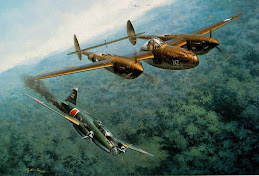 nothing of legend or fame. It will be parked in Bill's driveway, it will zoom over Johnny's house as he is trying to sleep. It will be an commonplace among citizens of America. Now the New York City businessman commutes from Central Connecticut every day. With this hybrid, the Connecticut man will fly into DC every day. Family can get together for the holidays even when they
nothing of legend or fame. It will be parked in Bill's driveway, it will zoom over Johnny's house as he is trying to sleep. It will be an commonplace among citizens of America. Now the New York City businessman commutes from Central Connecticut every day. With this hybrid, the Connecticut man will fly into DC every day. Family can get together for the holidays even when they live 200 miles apart fairly easily. The AeroCar will become the minivan of the future, while a sleek, more compact, more powerful machine will become the commuter car. The P-51 Mustang, pictured at the right, used to be a fighter plane in WWII and the Korean War. A plane like this could easily be fitted with wings that retract or fold back.
live 200 miles apart fairly easily. The AeroCar will become the minivan of the future, while a sleek, more compact, more powerful machine will become the commuter car. The P-51 Mustang, pictured at the right, used to be a fighter plane in WWII and the Korean War. A plane like this could easily be fitted with wings that retract or fold back. A few problems arise with the hybrid of the car and the plane. The first problem I see is government regulations. Obviously, speed limits would have to be changed to accomodate those commuters with wings. Operator's licenses would need to be harder to get, and more intensive training would be needed before issuing complete carte blanche upon a sixteen year old driver. Cars would need to be equipped with two sets of controls, so that the panicking parent has a way to fix a situation that their teenager got them into besides slamming on the non-existent passenger side brake pedal. Take-off and landing lanes would need to be designated on highways to allow commuters a place to complete their transition between the elements. GPS systems and radio systems would come standard in all carplanes. Air Traffic Control Towers would need to spring up everywhere and have a tighter control over traffic. Airspace would need to be reserved for large passenger and cargo planes. To increase gas mileage and range, manual or automatic transmissions would need to be adopted in controlling the rotation ratio of the propeller to the engine.
These problems present a significant obstacle for the adoption of the carplane into society. However, the drive of current entrepreneurs and those engineers under their employ will further this hybrid's development. And in the crucial time, when this development needs to be defended, and it's ideas distributed, I plan to be defend it with my words, and propagate its ideas within the circles of developmental engineers.






